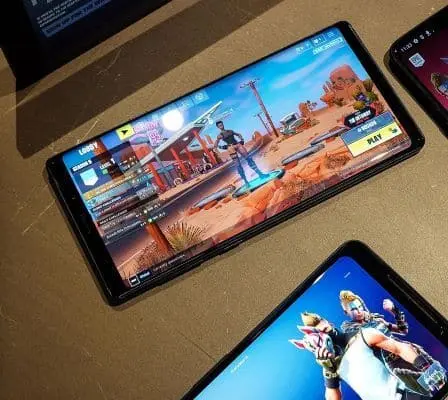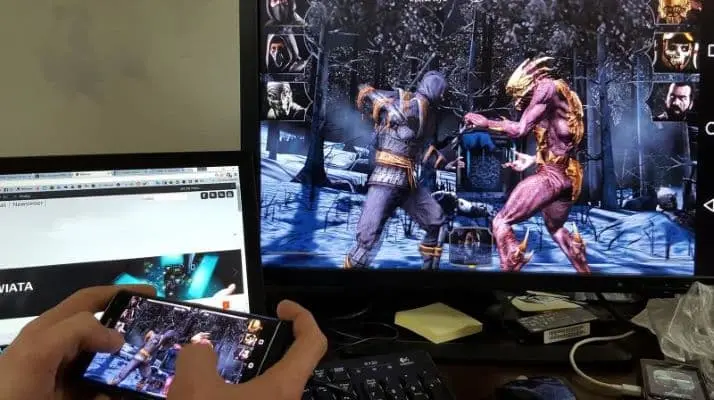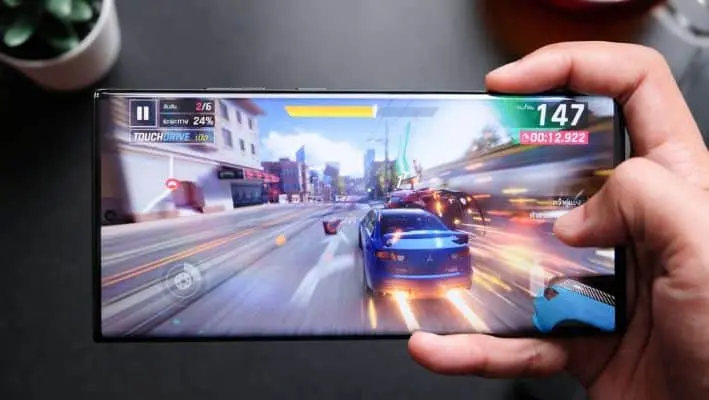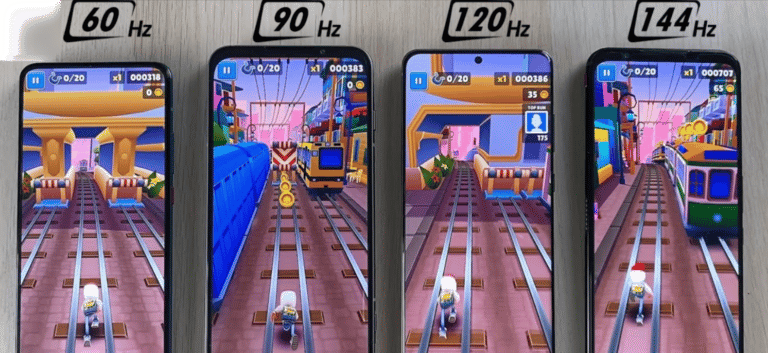Every time specs of any latest mobile are listed, refresh rates are mentioned. However, if you have been listening about these but have no idea what they are and what they do, you might not be alone. Here is everything you need to know about refresh rates.
What you will see?
Refresh Rates

The refresh rate of your phone’s display refers to how many times it is updated every second. The number of different frames that a display may display every second is measured in Hz. A higher refresh rate produces smoother images, which is perfect for gaming. A game developer, for instance, might add more frames to provide a crisper and more detailed image. However, this would only look nice if your display supports a higher refresh rate. Even while scrolling a web page or looking at how animations are rendered on your phone with a higher refresh rate, you’ll notice a difference. All smartphone screens come with a 60 Hz refresh rate as standard. This implies that the display will update 60 times per second.
Smartphones with 90Hz, 120Hz, and even 144Hz are, nonetheless, available on the market. However, a higher refresh rate does not necessarily imply that the image you are viewing is clearer and more detailed. You’ll also be held responsible for the resolution. Although 720p is called HD, it is not the best resolution for a smartphone display. The basic minimum need is a display panel with a resolution of 1080 pixels or Full HD. Additionally, remember the thumb rule when it comes to resolution: the higher the better. However, like with practically anything in technology, there is a downside. A display with a greater refresh rate and resolution will also require more battery. As a result, companies are producing smartphones with a variable refresh rate to address the battery usage issue.
Refresh Rate vs Frame Rate

Moreover, don’t confuse refresh rate with framerate. It refers to the number of frames per second your computer can output to the monitor. Essentially, the maximum framerate you’ll see is determined by the refresh rate of your monitor. If your system is capable of 90 frames per second in a game but your display is only capable of 60 frames per second, the gaming on your screen will only be 60 frames per second. In other words, the higher the better your gaming PC. A game with a higher framerate should have a crisper image with fewer blurring movements. Nowadays, a basic monitor has a 60Hz refresh rate and a 1080p resolution, sometimes known as Full HD. As you’re unlikely to attain 60 frames per second running games at 1080p, 60Hz is more than plenty for playing on a low-end system.
A regular 60Hz display should suffice if your gaming PC is a budget build or simply an older system. If you’re not a gamer, you don’t have to worry about this. This is because most entertainment video is set to 24fps or 30fps. Buying a $300 monitor when your GPU can barely push 60 frames per second to the screen is a bad idea. Unlike television, which can use image processors to modify video input and increase stability artificially, a monitor that runs at 300Hz offers no benefit to your picture quality if your system can’t keep up.
Variable Refresh Rate
Now that we know that having your smartphone display refresh a larger number of times per second might be bad for battery life, we needed a solution to ensure that customers receive the best of both worlds. If you’re staring at a still image and aren’t doing anything graphically intensive with the phone, it doesn’t need to refresh as quickly. As a result, the smartphone’s CPU has become capable of discriminating based on the type of material being consumed and, as a result, substantially lowering the refresh rate to save battery life. Similarly, if you transition from browsing photographs to playing a game, the processor will increase the refresh rate to provide you with the smoothest possible experience.
Refresh rate vs Variable refresh rate
A panel with merely a higher refresh rate may not be good because it will work tirelessly even when not required. As a result of the chipset, adding intelligence or brain to the panel not only helps to reduce battery drain but also allows businesses to employ panels with even greater refresh rates than before. For instance, Samsung’s latest Galaxy S21 Ultra has a display refresh rate of up to 120 Hz for a fluid experience. However, it is locked down to as low as 10Hz per second when you’re using the phone for monotonous tasks. Another thing to keep in mind is that most companies use VRR in their flagship phones. Although, mid-range and low-cost flagship phones may lack the benefit of a display panel with the ability to change the refresh rate.
Does a higher refresh rate guarantee a better experience?

Any display that has a refresh rate of more than 60Hz and that we’ve been using for a long time will feel better. It’ll almost certainly be flowing and buttery smooth. Providing a better user experience requires other pieces to fall into place. When it comes to a regular refresh rate, battery consumption is a huge issue. While VRR is a potential solution, a poor implementation could ruin the experience rather than be a valuable feature. However, there is also a never-ending debate about LCD and OLED displays. As a result, the type of panel utilized might also be a deciding factor.
Although some people prefer OLED panels for their deeper blacks and better color reproduction. However, a decent LCD screen may still create true colors and provide an equally quality experience. Even though it may not be as immersive as OLEDs. Another significant factor that influences how quickly the display detects touch input is known as Touch Sampling Rate or Touch Refresh Rate. It is defined as the number of times a touchscreen panel looks for a touch input each second. Touch Sampling Rate is measured in Hz too.
30Hz, 60Hz, 120Hz – What’s the difference?
When shopping for a TV or monitor, you’ll discover that there are a few different refresh rates to choose from. The most popular ones you’ll see are 30Hz, 60Hz, and 120Hz. However, there are also 50Hz and 85Hz panels, as well as 144Hz and a few other weird numbers out there. Each of these factors is determined by the number of times a fresh image is displayed on the screen. A 60Hz display generates a new image every 16th millisecond. Although, a 120Hz screen generates an image every eighth millisecond. But whether you can tell the difference is a different story.
Refresh Rate vs Touch Sampling rate
People are frequently confused between the two, owing to sophisticated marketing by brands. Refresh rate refers to how quickly the display registers a touch response and sends it to the processing unit, i.e. the chipset, for rendering the next screen. However, touch sampling refers to how quickly the touch response is registered by the display and sent to the processing unit, i.e. the chipset. Higher Touch sampling is just as vital as a higher refresh rate when playing games. Imagine you’re playing a game on your phone and you’re one strike away from winning, and you keep tapping the shoot button, but it doesn’t register the click. As a result, instead of winning, you may find yourself on the losing side. That’s how critical a faster Touch reaction rate may be for a gamer.
It is safe to say that the higher the value for both the Refresh Rate and Touch Sampling Rate, the better the experience and the less lag. In addition, for gaming, a smartphone having a 120Hz refresh rate and a 240Hz touch sampling rate would be perfect. As a result, the screen will provide a buttery fluid feel, while the greater sampling rate will result in the touchscreen responding much faster. The Asus ROG Phone 3, for example, is widely regarded as one of the best gaming smartphones ever.
Conclusion
While buying a smartphone or gaming PC, you will have to check the refresh rates for their display panels. It refers to how many times the display is updated every second. A higher value will give a smooth and buttery flow while using your mobile. However, getting a display with a higher refresh rate might not be enough if the display resolution quality is low. You need to check the resolution quality too. Although, with a high refresh rate comes quick battery drain. to tackle this problem companies have introduced VRR. This will automatically reduce the refresh rate when not required to save the battery life.
If you have any doubts, you can ask us in the comments section below.
Read More!
- Enjoy switching multiple devices with the Best Cheap HDMI Switchers!
- How to use Workflow for iOS when you don’t know where to start?
- iPhone 13 Pro Review- Super features in this superphone!
- Wallet – The Supreme Guide
- These are the best smartphones currently on the market you should have an eye upon!
















